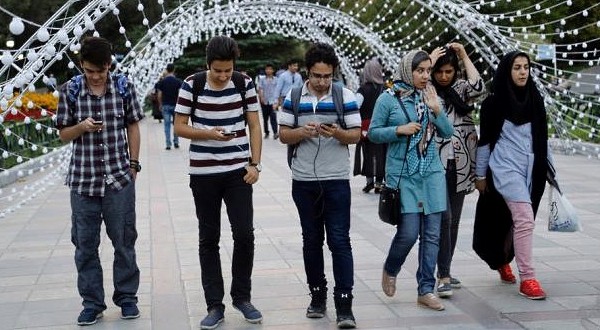August 19, 2016

Pokemon Go has now been banned by clerics in Saudi Arabia, who find it un-Islamic, as well as by security officials in Iran, who think it may be an American spy plot.
And the Pentagon has banned it from that building for security reasons, giving some semblance of reality to the Islamic Republic’s fears.
The global Pokemon Go craze has prompted a slew of complaints, mainly from memorial sites—like at Auschwitz and Hiroshima—that are offended by people playing the game around monuments to the dead.
Sites that have expressed irritation at Pokemon Go players include private properties, government buildings, historic monuments and memorial sites.
The museum at the Ausch-witz Nazi death camp, the Holocaust memorial in Berlin and Japan’s Hiroshima memorial have all complained about visitors bent over their cellphones trying to catch cartoon monsters, ignoring the weight of history all around them.
Iran and Saudi Arabia are the only countries to have declared blanket bans on the game, however.
The Iranian ban came days after the game’s release last month, with officials saying it could be used for spying because the app leads users to real locations. Alireza Al-Davud, a hardliner analyst, told the Tasnim news agency, “These games can become a means for directing guided missiles and even cause disruptions to ambulances and fire trucks.” He said he feared the Americans were using the game to spy on Iran.
Deputy Prosecutor General Abdol-Samad Khorramabad was a lot less specific. “Because the game is a mixture of virtual and physical games, it can pose lots of problems for the country and people in terms of security,” he said mysteriously.
In Saudi Arabia, the top clerical body has re-issued a 15-year-old fatwa banning Pokemon in response to the new smart phone version, saying it is too much like gambling and appears to be based on the theory of evolution, which is rejected by Wahhabi Islam.
The Washington Times reported that the Pentagon sent a memo to everyone in the building telling them not to play the game inside the Pentagon, the world’s largest office building. Pentagon officials expressed concern that the game’s use of the GPS satellite network could provide an outside party with pinpoint accuracy on the locations of rooms where secrets are stored. They are also concerned the game could provide personal information on officials to parties attempting cyber attacks or spy recruitment. (The federal government has long said employees must not play computer games on government time.)
Volkswagen told its 70,000 employees they must not even install Pokemon Go on their phones, saying the app’s link to a phone’s camera makes it possible for corporate spies to watch what Volkswagen is doing inside its buildings.
The Israel Defense Forces has banned the game from all its bases, arguing that the game could betray secret locations.
Just as Uber has demonstrated the ability to track any client, any app that uses personalized location tracking, which Pokemon does, can in theory do the same.
Much of the game’s appeal lies in the way the Pokemon—little cartoon monsters in the shape of everything from goldfish to dragons—pop up around you, overlaid on your phone’s camera images.
The game also encourages players to explore the world around them by making them visit landmarks designated as “Pokestops” and “Gyms.” These could be anything from a local school to a major tourist attraction like India’s Taj Mahal.
At Pokestops players can collect the tools they need to catch the critters, while at Gyms they can fight them against each other.
The locations are designated by the game’s California-based designer, Niantic.
The company used data from an earlier game called Ingress in which players could walk around the streets capturing locations on a GPS map. Niantic grew its original list of landmarks with extra suggestions from players.
In Tehran, Mellat Park has one Pokestop and two Gyms, making the northern Tehran park a major concentration point for players, who complain there are few Pokestops and Gyms in Tehran
A Pokemon—the name means “pocket monster”—can appear on your smart phone screen at any time in any place. The game’s algorithm places the monsters at random—although you are more likely to find different types of Pokemon in different locations. Fish-type Pokemons, for example, can often be found near lakes or rivers.
There’s no need to be right on top of a Pokemon to catch it. The system allows for a capture within a several-meter radius, meaning you shouldn’t have to drive to a screeching halt in the middle of the road just to add it to your collection.
It depends on whether the place in question is a Pokestop, a Gym, or simply somewhere the little critters have been popping up.
It is possible to ask Niantic for a location to be removed as a Pokestop or Gym—and many places bugged by crowds of teenagers are doing just that. The developer cannot remove them from the game instantly, but each update of the app can see sites added or removed from the list.
The most recent update saw the Hiroshima and Berlin Holocaust memorials disappear as Pokestops and Gyms.
But it’s a lot more complicated to stop the monsters themselves from popping up at a site that would like to see them banned. That would require a modification of the game’s algorithm, a complex process that presents a headache for the developers.
The Pokemon Company, the Japanese firm which manages the hugely popular brand, says Niantic is working on improving the algorithm.
